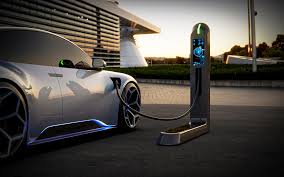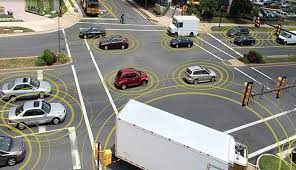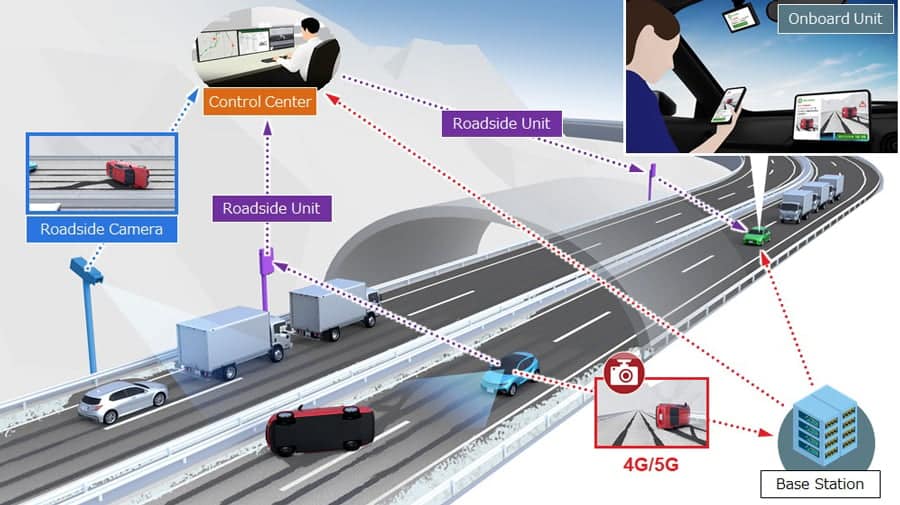Explore how connected vehicles are transforming our roads, from safety enhancements to traffic management, paving the way for smarter transportation.

Connected vehicles, also known as smart cars or intelligent vehicles, are revolutionising the automotive industry by integrating advanced communication technologies into vehicles.
These vehicles are equipped with internet connectivity and sensors that enable them to communicate with other vehicles, infrastructure, and external systems. The concept of connected vehicles is built upon the idea of creating an intelligent transportation system that enhances safety, efficiency, and the overall driving experience.
Through vehicle-to-vehicle (V2V) and vehicle-to-infrastructure (V2I) communication, connected vehicles can exchange real-time information such as traffic conditions, road hazards, and weather updates. This information enables drivers to make informed decisions, avoid accidents, and choose the most efficient routes.
Additionally, connected vehicles offer various features and services, including advanced driver assistance systems (ADAS), remote diagnostics, vehicle tracking, and entertainment options.
The integration of connected vehicles has the potential to transform transportation on a large scale, reducing traffic congestion, improving fuel efficiency, and minimising the environmental impact of vehicles.
As technology continues to advance, connected vehicles are expected to play a significant role in shaping the future of transportation, paving the way for autonomous vehicles and a more connected and intelligent transportation network.
V2V Technology
V2V technology, a crucial component of connected and autonomous vehicles, enables vehicles to communicate with each other wirelessly.
By exchanging real-time information, V2V technology aims to enhance road safety, improve traffic flow, and increase overall driving efficiency.

Here are some key aspects and benefits of V2V technology:
- Communication and data exchange: V2V technology allows vehicles in proximity to share information such as speed, acceleration, deceleration, and position. This communication occurs through dedicated short-range communication (DSRC) or cellular-based systems. By exchanging data, vehicles can gain awareness of their surroundings and make informed decisions based on the behaviour of other vehicles.
- Collision avoidance and safety: V2V technology provides an additional layer of safety by alerting drivers to potential collision risks. Vehicles equipped with V2V systems can exchange data about their speed, direction, and position, enabling them to detect potential hazards, even if they are outside the driver’s line of sight. In critical situations, V2V systems can issue warnings to drivers, helping them take preventive actions to avoid accidents.
- Cooperative adaptive cruise control (CACC): V2V technology enables the implementation of CACC systems, which extend traditional adaptive cruise control by incorporating communication capabilities. With CACC, vehicles can maintain safe following distances by automatically adjusting their speed based on the information received from preceding vehicles. This cooperative behaviour enhances traffic flow, reduces congestion, and promotes fuel efficiency.
- Intersection safety: V2V technology plays a vital role in improving safety at intersections. By exchanging data about their positions and intentions, vehicles can anticipate potential conflicts and coordinate their movements accordingly. This allows for smoother traffic flow, reduced delays, and a lower risk of intersection-related accidents.
- Emergency vehicle warning: V2V systems can detect and communicate the presence of emergency vehicles, such as ambulances or fire trucks, to surrounding vehicles. This information enables drivers to make way and create a clear path for emergency vehicles, facilitating quicker response times and potentially saving lives.
- Vulnerable road user protection: V2V technology can enhance the safety of pedestrians, cyclists, and motorcyclists by providing alerts to both the vulnerable road user and the driver. For example, if a pedestrian equipped with a V2V device is about to cross the road, nearby vehicles can receive a warning, allowing the driver to take appropriate action and avoid a potential collision. V2V technology holds immense potential for transforming road safety and enhancing the driving experience. By enabling vehicles to communicate and share critical information, V2V systems contribute to a more intelligent and cooperative transportation network, reducing accidents, improving traffic efficiency, and ultimately making our roads safer for everyone.
V2I Technology
V2I, or vehicle-to-infrastructure technology is an innovative communication system that enables vehicles to exchange information with the surrounding infrastructure, such as traffic lights, road signs, and transportation management systems.
This technology has the potential to revolutionise transportation by improving safety, efficiency, and the overall driving experience. Let’s explore some of the key applications of V2I technology.

- Traffic management: V2I technology allows vehicles and infrastructure to communicate in real time, enabling better traffic management. Traffic signals can adjust their timing based on current traffic conditions, optimising the flow of vehicles, and reducing congestion. This can lead to smoother traffic flow, shorter travel times, and reduced fuel consumption.
- Safety enhancements: V2I technology can significantly enhance road safety. Infrastructure can provide real-time warnings to vehicles about road hazards, accidents, and adverse weather conditions. For example, if a vehicle approaches a hazardous intersection, it can receive an alert from the traffic signal to slow down or stop. This proactive communication helps prevent accidents and improve overall road safety.
- Intelligent transportation systems: V2I technology plays a crucial role in building intelligent transportation systems. By collecting data from vehicles and infrastructure, transportation agencies can gain valuable insights into traffic patterns, congestion hotspots, and road conditions. This data can be utilised to develop smart traffic management strategies, optimise infrastructure planning, and make informed policy decisions.
- Electric vehicle integration: With the increasing adoption of electric vehicles (EVs), V2I technology can support their integration into the existing transportation infrastructure. EVs can communicate with charging stations to determine availability, location, and pricing. This allows drivers to find and reserve charging stations conveniently, promoting the widespread use of electric vehicles.
- Emergency services: V2I technology enables improved emergency response systems. When an accident occurs, vehicles can relay real-time information to emergency services, including location, severity, and vehicle data. This helps emergency responders to quickly reach the scene, assess the situation, and provide appropriate assistance.
- Infrastructure planning: By leveraging V2I data, transportation planners can gain insights into traffic patterns and identify areas that require infrastructure improvements. This data-driven approach allows for more effective allocation of resources, ensuring that infrastructure projects are targeted where they are most needed, leading to better transportation systems overall.
V2I technology enables communication between vehicles and infrastructure elements such as traffic signals, road signs, and roadway sensors. This connectivity allows vehicles to receive real-time information about traffic conditions, road hazards, and signal timings, enabling drivers to make informed decisions and optimise their routes.
V2V technology, on the other hand, facilitates direct communication between vehicles, enabling them to share information about their speed, position, and heading. This exchange of data enables cooperative manoeuvres, such as collision warnings and cooperative adaptive cruise control, to improve safety and traffic flow.
By integrating V2I and V2V technologies, vehicles can communicate with both infrastructure and other vehicles, creating a connected ecosystem that enhances situational awareness and enables intelligent transportation systems to operate efficiently and effectively.






